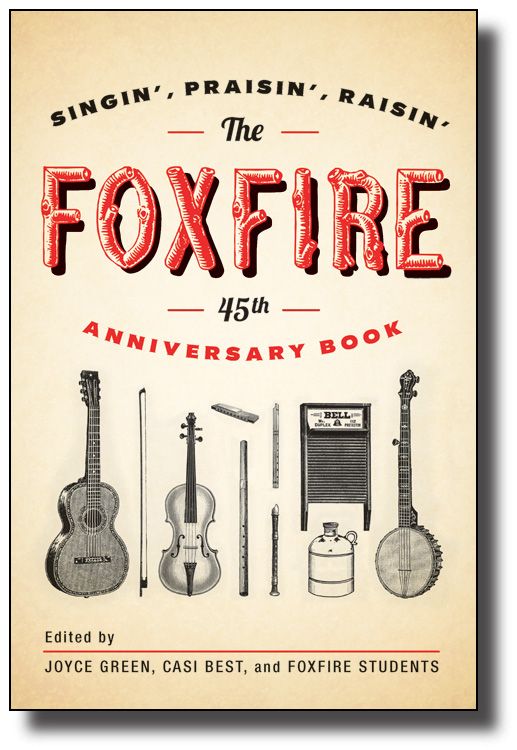The Foxfire Book

In the wonder world that is the internet, I found the 45th anniversary edition of The Foxfire Book. It and its sequels are collections of original stories about life and craft in rural Appalachia. They cover such things as hog butchering, log-cabin building, planting by the moon, and even making banjos and dulcimers. The stories were collected and compiled by Georgia high school students, originally under the tutelage of Eliot Wigginton. (Sadly, Wigginton was convicted of child molestation in 1992 and is no longer associated with Foxfire. Oh, the things you learn researching a blog.)
Never mind that The Foxfire Book was published in 1972, that its 45th anniversary isn’t until 2017, and that the 45th anniversary edition was published in 2011. The 45th anniversary being celebrated is the beginning of the high-school project, where the kids went out into the mountains and interviewed people.
I’m writing about Foxfire for a couple of reasons. First, it’s one of the roots of how I ended up as a carpenter and then a magazine editor. I found that book shortly after it came out, when I would have been about 12. There I was, an 8th grader with an ax, trying to find enough logs to build a cabin like The Foxfire Book showed. Unfortunately, we didn’t have enough trees on our property, and my neighbor with the Winnie-the-Poohesque hundred-acre wood would only let me take downed timber. After a few months, I gave up the cabin as unrealistic.
A couple of years later, I picked up The Foxfire Book again. This time, I tackled a more realistic project from the book: building a banjo. I had no idea how to play a banjo, or any musical instrument for that matter, never mind knowing how to build one. But build one I did. It was awful, but I had a grand time. Next, I built a couple of dulcimers. They were less awful, but still not good.
But the end result wasn’t so much the point. I learned that I could do it. I learned that I loved the process of building things, of solving the problems that building anything presents. I had no money for materials. I didn’t have many tools and even had to make some of them. My parents had divorced by then. My father, who was a decent woodworker, had moved out, so I had no adult guidance. I just figured stuff out, which pretty much set the pattern for the rest of my life.
In short, The Foxfire Book may have been the most empowering book I ever read.
Fast-forward a few decades. My three-town school district in Connecticut is served by Shepaug Valley High School. Since the 1980s, each senior must complete a project of their choosing to graduate. One of my sons built a computer, and the other built a scorekeeper’s shed at the school track. I’ve been involved as the technical advisor for three other kids’ projects, last year for a neighbor who built a teardrop camping trailer.
The genesis for this program was the high-school kids in Georgia who created The Foxfire Book. Eliot Wigginton even visited Shepaug Valley High School to help start the program. It’s funny how circular life can be. Recently, the senior project has become a statewide graduation requirement. I think that’s a great thing, because the most important lesson kids need to learn is that, yes, they can make stuff happen.
Fine Homebuilding Recommended Products
Fine Homebuilding receives a commission for items purchased through links on this site, including Amazon Associates and other affiliate advertising programs.

Reliable Crimp Connectors

Handy Heat Gun

Affordable IR Camera























